The finest USB microphones are likely the most suitable choice for you. Although XLR microphones offer superior audio fidelity compared to USB mics, the distinctions are typically only discernible to the most astute listeners. Many professional podcasters and streamers opt for USB mics over XLR mics due to their user-friendly nature.
USB mics are exceptionally straightforward to use. Simply unbox the microphone, connect it via a USB cable, and you’re good to go. It’s virtually foolproof, doesn’t necessitate any extra gear, yet delivers top-notch audio quality.
Best USB Microphones Reviews
1. Logitech for Creators Blue Yeti
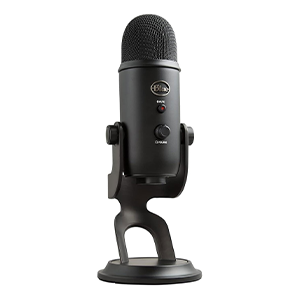
Over the years, Blue Microphones has built a strong reputation for producing exceptional microphones. As a proud owner of both the Mouse and the Kiwi mics, I can confidently say that they are among my favorite vocal microphones and can easily compete with top Neumanns.
Recently, Blue has expanded its focus to cater to a wider audience, including regular individuals and creators, by creating smaller studio microphones. However, I firmly believe that the Blue Yeti remains one of the best microphones available for podcasting and content creation.
Despite being a budget-friendly option, the Yeti showcases Blue’s expertise in crafting high-quality capsules and Class A circuitry, resulting in the capture of exquisite vocal details.
The Yeti has a nostalgic charm reminiscent of RCA microphones, and its impressive frequency response of 20 Hz to 20 kHz ensures exceptional performance. It truly doesn’t get any better than this.
When it comes to ASMR, the Yeti is my go-to microphone when a vocalist wants to create an intimate experience, as if they are whispering directly into your ear.
Although I have previously used the Neumann U87, I find that the Yeti excels in delivering the perfect proximity effect. Its capsule design effectively minimizes bothersome pops that often occur when breathing too closely to the microphone, a common issue with many condenser microphones.
I appreciate the fact that the Yeti does not require a windscreen or pop filter. Its threaded mic mount effectively reduces mouth sounds that can be quite bothersome.
Furthermore, the microphone features a well-designed mute button that instantly cuts off the signal, acting as a gate to eliminate unwanted noise when not speaking. This particular feature proves to be highly beneficial in enhancing ASMR recordings by minimizing the need to remove distracting noises between takes.
2. Audio-Technica AT2020USB-X
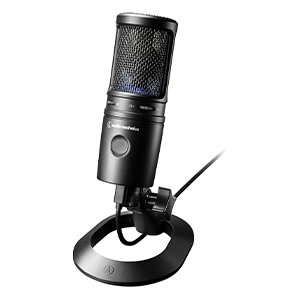
The Audio-Technica AT2020 is highly recommended for ASMR and field recording purposes due to its impressive features. With a sample rate of up to 96K, it excels at capturing intricate details in both close-up and field sounds.
The 96K sample rate offers several advantages, including more headroom and range before any clipping occurs. This is crucial for maintaining the integrity of the recorded audio.
In ASMR, the ability to capture delicate sounds like whispers, snaps, and rubbing is essential. The AT2020’s higher resolution ensures that these subtle nuances are faithfully reproduced.
One notable feature of this microphone is its built-in headphone jack. This allows for instant monitoring with zero delay, enhancing the overall user experience. Imagine being able to listen to your recordings in real-time, make immediate adjustments, and achieve optimal sound quality. It truly revolutionizes the recording process.
Additionally, the LED indicators on the AT2020 are incredibly useful. They provide visual cues about the microphone’s status, whether it’s powered on or muted. This feature eliminates any concerns about accidentally recording when intending to mute, making it a game-changer.
As a fan of Audio-Technica microphones, I must say that the AT2020’s clean sound quality is exceptional. It is my go-to choice when I want to capture the ambiance of a room without excessive background noise.
However, it’s important to be aware that the fixed cardioid pattern of the microphone can pick up excessive room sound if positioned too far away. Therefore, it’s advisable to be cautious and find the optimal distance for recording.
3. Zoom H5
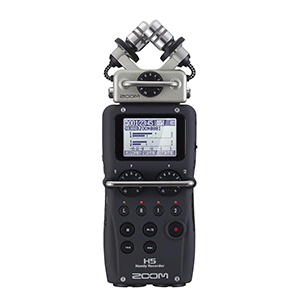
The Zoom H5 is truly impressive. I am a huge admirer of the design of Zoom products. I have written multiple reviews featuring Zoom products, and every time I am amazed by their exceptional quality.
Zoom has successfully integrated numerous knobs, buttons, and features into compact interfaces without compromising on appearance or quality. It is genuinely remarkable.
Among all the models, the H5 is undoubtedly one of the finest. I primarily use it for recording nature sounds for sample libraries.
It is also ideal for ASMR, functioning more like a handheld portable recording device rather than a complex tripod setup.
I utilize the Zoom H5 to capture various sounds in the room where the performer is situated. For example, in one session, we rubbed different materials together, which is highly popular in ASMR communities.
I move around with the Zoom, using brushes and cotton tools to rub different fabrics and capture the sound. The Zoom excels at capturing even the most minute details up close.
I also appreciate its ability to offer a resolution of up to 24 bit 96 kHz.
The fixed XY configuration of the stereo mic is crucial as it allows for easy attainment of that perfect stereo image. Additionally, the microphone is excellent for binaural ASMR work, providing a close-up binaural effect when recorded less than an inch from your mouth.
Furthermore, this device includes XLR and quarter-inch inputs, enabling you to connect additional microphones if desired.
The H5, powered by AA batteries, serves as a mini mixer and a four-track playback system on the go! It is truly exceptional.
4. Shure MV88+
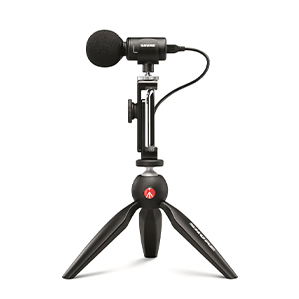
The Shure MV88+ is an exceptional microphone specifically designed for ASMR. It comes with a convenient built-in tripod kit and is perfectly positioned for on-camera use.
ASMR creators, especially those on YouTube, often need to be close to both the microphone and the camera. This allows them to directly engage with the viewer during their meditations and performances.
Furthermore, the Shure MV88+ seamlessly integrates with Android smartphones and can be used with the Motiv app. This app provides access to DSP (Digital Signal Processing) and allows for precise control over the microphone’s mid-side capsule.
The environment in which you perform your ASMR plays a crucial role in creating a sense of intimacy and closeness with the viewer and listener. Techniques like whispering, narrating sleep-inducing stories, and gentle skin-to-skin or material rubbing can enhance the overall experience.
When assisting clients with ASMR performances and recordings, I always recommend finding a quiet setting and using high gain on the microphone’s preamps.
The MV88+ is a stereo microphone that captures a wide and immersive audio image of your surroundings. It also offers the flexibility to record in various mono or figure-8 configurations, which is particularly useful for ASMR when you want to capture your voice on one side and other sounds on the opposite side, such as fingers, hands, or objects.
Having personally used the Shure MV88+ on multiple occasions, I am particularly impressed with the effects provided by the MOTIV app. It has an excellent stereo adjustment function, as well as useful EQ (Equalization) and dynamics controls. The sound quality is remarkable, and the gain remains clean and clear.
5. PowerDeWise Lavalier Microphone
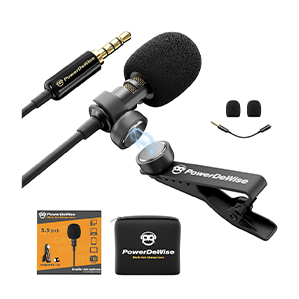
I understand that some of you may have questions about this brand, especially because the packaging looks similar to power tools found in the Home Depot’s power tool section. However, surprisingly, this lavalier microphone is probably the best choice for ASMR based on my personal testing.
One of the reasons for this is the recent upgrade that was implemented last year. They have added shielding to the cord, effectively eliminating RF interference and ensuring flawless audio transmission.
PowerDeWise also provides a windscreen pop filter, which rejects vocal wind dynamics and prevents annoying rubbing noise when the microphone is off-axis and comes into contact with clothing or the neck.
What truly impresses me about the PowerDeWise Lav Mic, and why I frequently use it for ASMR, is its wide frequency range despite its small size. Additionally, it boasts a low 74 dB noise level, which is not common for lapel microphones.
This microphone is particularly suitable for YouTube content creators who perform ASMR in front of the camera but not in close proximity to it. It guarantees a distraction-free experience without the microphone being visible on-screen.
ASMR aims to create a peaceful audio/visual experience, and any visible microphones, bright clothing, room lighting, or other technical equipment in the frame can disrupt that. Therefore, investing in a reliable lapel microphone is a wise decision.
Furthermore, this microphone is compatible with Android devices, GoPro camcorders, tablets, laptops, and more. It also works with iPhones, although an adapter is required.
The only thing I would like to mention about this microphone is that it may not provide the highest quality digital transmission. Therefore, occasionally, I connect it to another preamp through the 3.5 mm Jack and then into my DAW at 96K.
Final Word
In order to evaluate USB microphones, we will conduct a series of tests. Firstly, we will record ourselves speaking into the microphones and then listen to the playback to assess the sound quality under various settings. Thankfully, most models have straightforward controls, but by adjusting these controls and re-recording, we can also evaluate the user-friendliness of the microphones and determine how easy it is to find the optimal gain, volume, and positioning.
If a USB microphone supports different recording patterns, we will repeat the testing process accordingly. For instance, we can assess bidirectional and omnidirectional modes by speaking into the microphone from different angles. In some cases, we may even subject the microphones to the ultimate test by using them for live podcast recordings. Alternatively, we can utilize the microphones for voice and video calls and seek feedback from other participants regarding the sound quality.

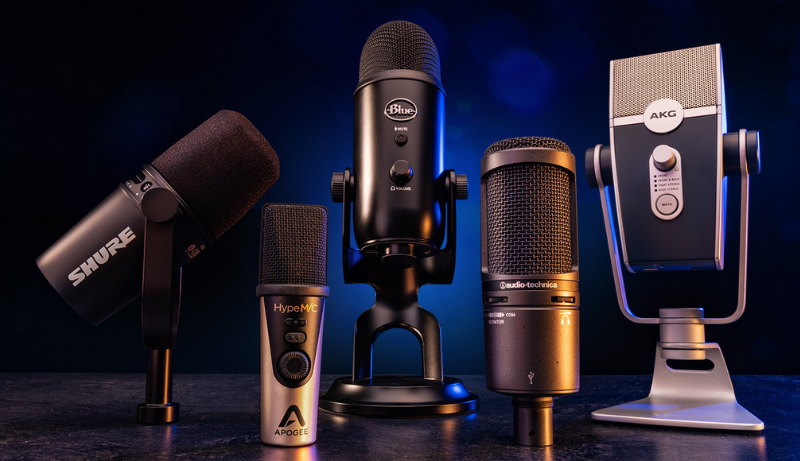

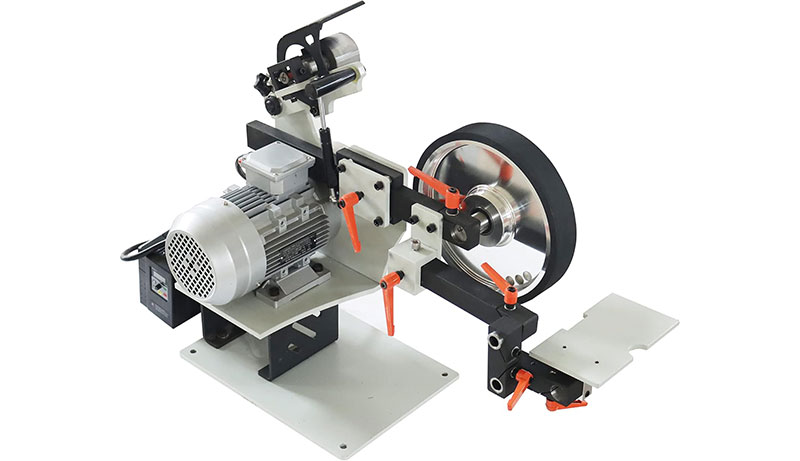
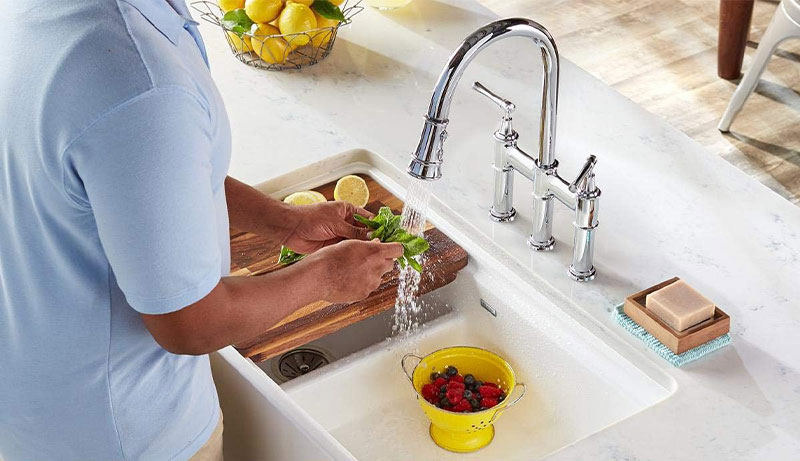
Leave a Reply